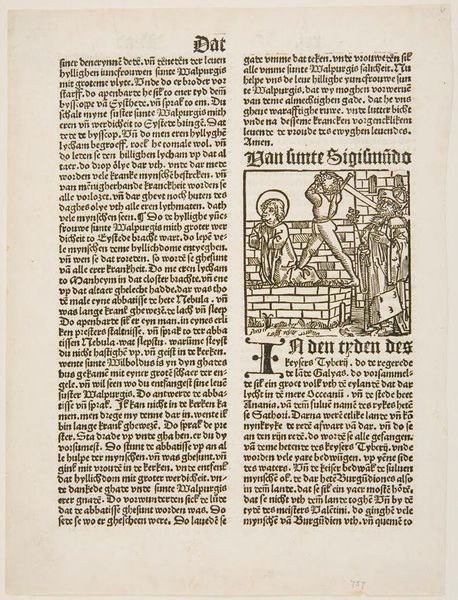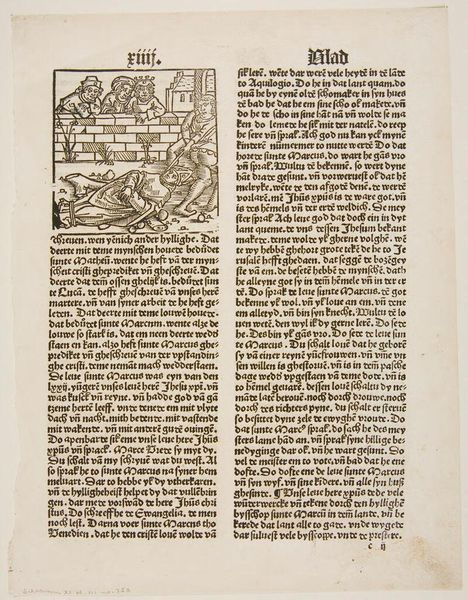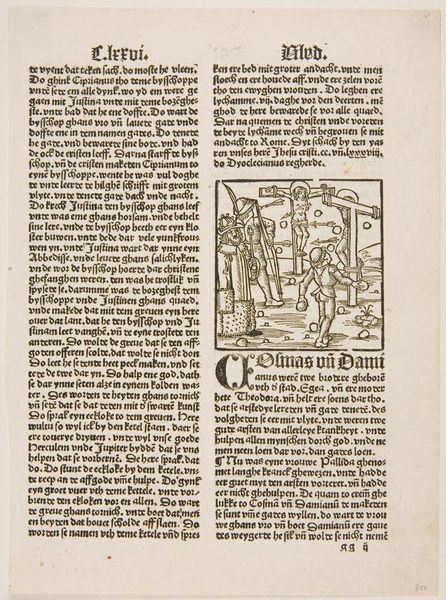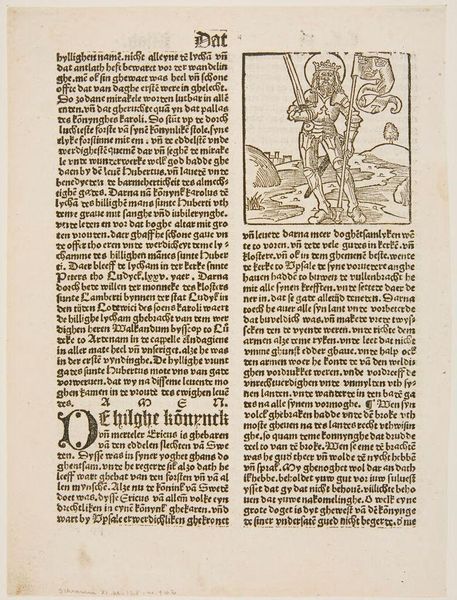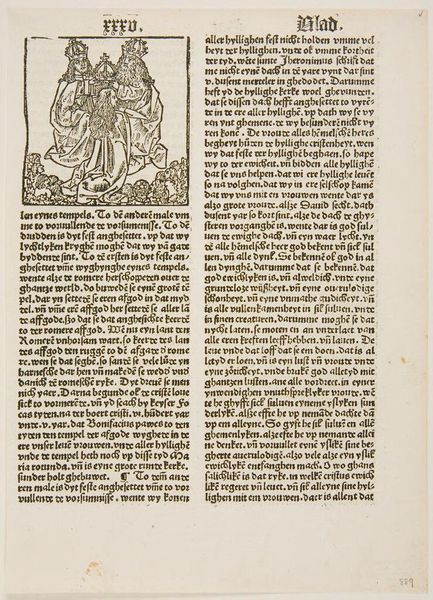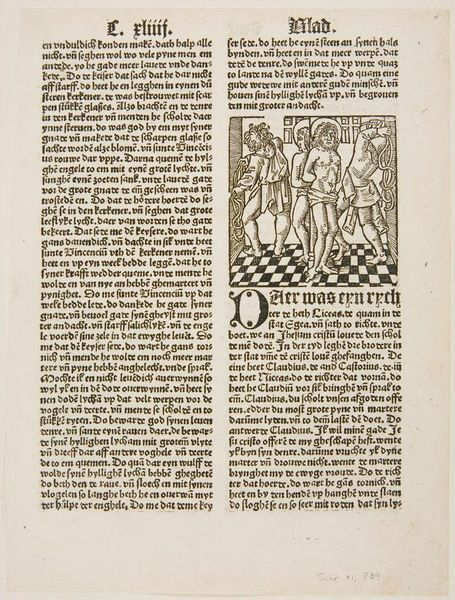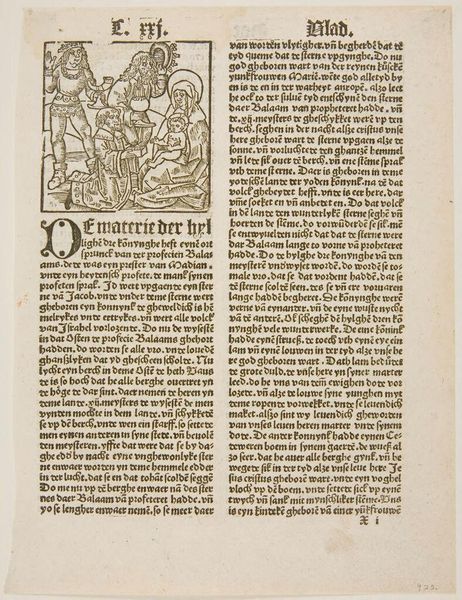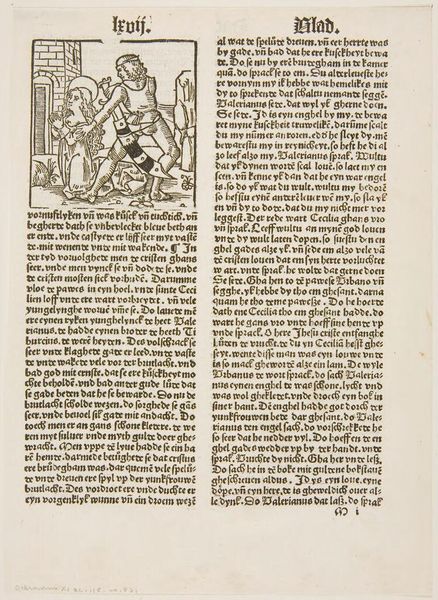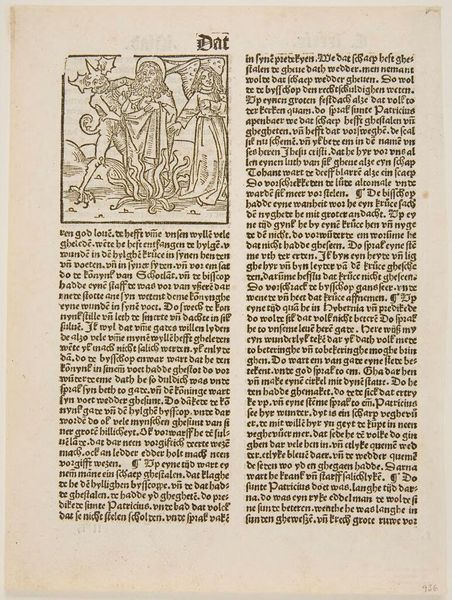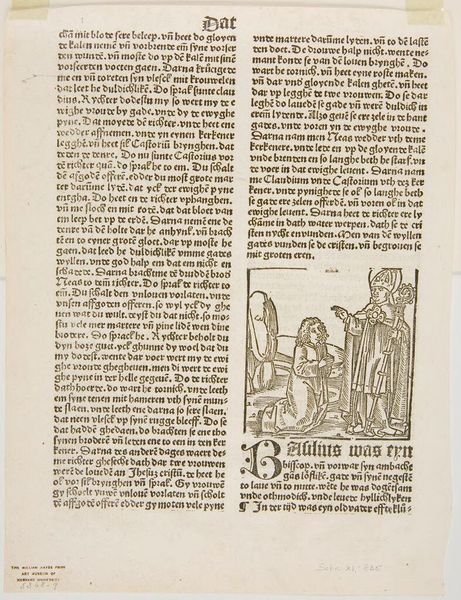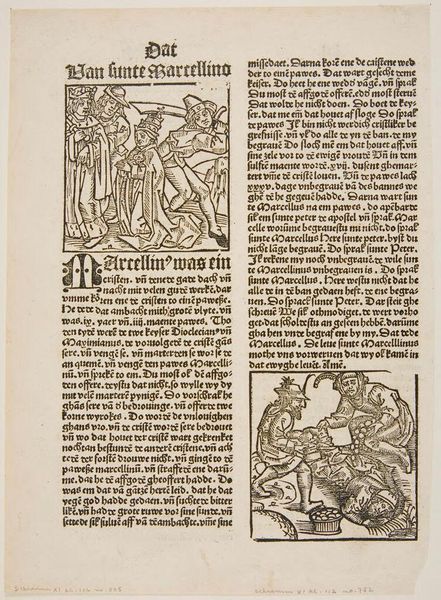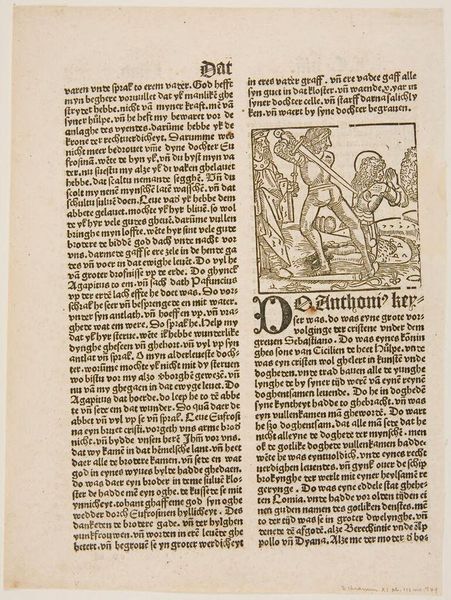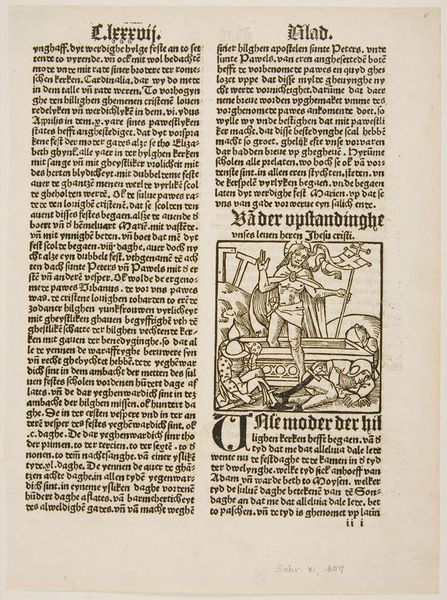
Copyright: CC0 1.0
Curator: Here we have an intriguing woodcut, “Saint Peter Martyr,” by an anonymous artist. It resides in the Harvard Art Museums collection. Editor: The chaotic scene, with its dense lines and stark contrast, initially feels brutal. There's a rawness to the depicted violence—almost like witnessing a news event. Curator: Indeed. The woodcut medium lends itself to bold statements. Consider the historical context; such prints were crucial in disseminating religious narratives to a broad audience. Editor: I'm also curious about the labor that went into carving the woodblock itself. What level of skill was required, and what did the process entail? It speaks to the accessibility of printmaking. Curator: Absolutely. The image served a didactic purpose, shaping popular understandings of sainthood and martyrdom, reflecting the socio-religious values of the time. Editor: And the way the figures are rendered—the exaggerated gestures, the crude weaponry. It emphasizes the suffering and brutality of Saint Peter's demise. Curator: It reminds us that art is not created in a vacuum. Even something seemingly simple reflects the complex interplay of faith, labor, and power. Editor: Seeing this woodcut, I’m left thinking about the role of art in depicting violence, and how the process of making it influences its reception.
Comments
No comments
Be the first to comment and join the conversation on the ultimate creative platform.
